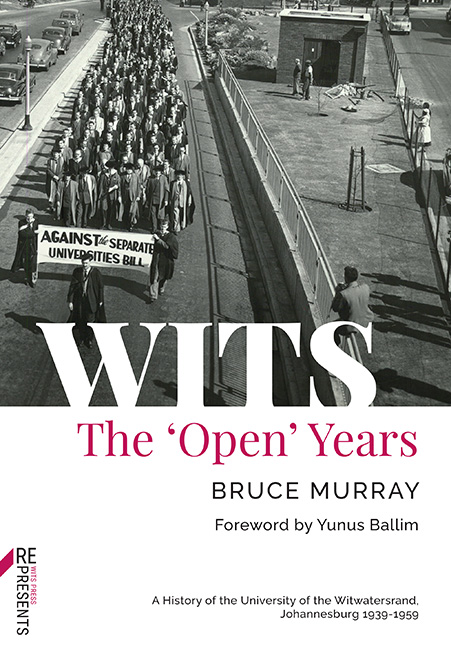Preface and Acknowledgements
Published online by Cambridge University Press: 24 November 2023
Summary
This, the second volume of the history of the University of the Witwatersrand, Johannesburg, has a more political focus than the first. It covers the period from the outbreak of World War II in September 1939 to the enactment of the Extension of University Education Act in 1959, and has as its central themes the emergence of Wits University as an ‘open university’, the extent to which it became ‘open’, and the defence it mounted to preserve its ‘open’ status in the face of the challenge posed after 1948 by the Nationalist Government and its apartheid policies.
In a South African context, Wits University and the University of Cape Town were categorised by themselves as ‘open universities’ in that their admission criteria were supposedly purely academic, applied without regard to considerations of race, colour or creed, and in that whites and ‘non-whites’ were taught together in the same classes. In this they differed from the other residential universities in South Africa, which either excluded ‘non-whites’ altogether or, as in the case of the University of Natal, Durban, taught them in separate classes. Through the Extension of University Education Act of 1959, which constituted a major expression of apartheid policy, the Nationalist Government prohibited ‘non-whites’ from attending ‘white’ universities, except with ministerial permission, and established a series of separate ethnic or ‘tribal’ university colleges for ‘non-whites’. As a result, in the 1960s the number of African and coloured students at Wits fell precipitously.
This volume examines the process by which Wits became an ‘open university’ in the first instance, with particular emphasis on the significance of World War II for the ‘opening’ of the Medical School. It also indicates that Wits did not become fully ‘open’ in the 1940s and 1950s. The number of ‘non-white’ students who gained access to the University was relatively small, and certain departments and one faculty – Dentistry – did not admit ‘non-whites’ at all. In the formal social and sporting spheres, official University policy was one of applying the so-called ‘colour bar’: the declared policy of the University was that of ‘academic non-segregation and social segregation’.
- Type
- Chapter
- Information
- WITSThe 'Open' Years, pp. xv - xviiiPublisher: Wits University PressPrint publication year: 2022



